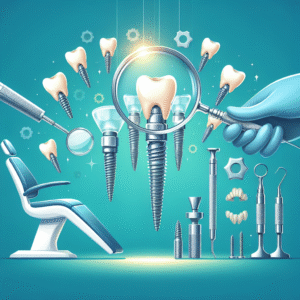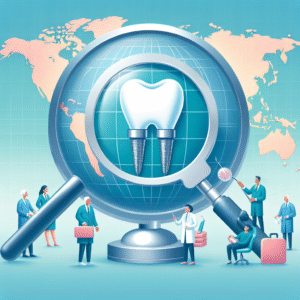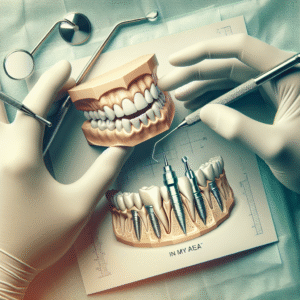All-on-4 Dental Implant Procedure: Equipment Needed
The All-on-4 dental implant procedure is a revolutionary solution for patients seeking a permanent, stable, and natural-looking alternative to traditional dentures. This technique allows for the placement of Full-Arch Dental Implants in a single day, often referred to as Teeth-in-a-Day or Same-Day Implants. To ensure precision, efficiency, and patient comfort, specialized equipment is required. This article explores the essential tools and technologies used in the All-on-4 procedure, including those for Implant-Supported Dentures, Zygomatic Implants, and Bone Grafting for Dental Implants.
1. Diagnostic and Imaging Equipment
Before performing the All-on-4 procedure, comprehensive diagnostics are necessary to assess bone density, nerve positioning, and overall oral health. The following equipment is crucial:
Cone Beam Computed Tomography (CBCT) Scanner
A CBCT scanner provides high-resolution 3D images of the jawbone, teeth, and surrounding structures. This technology is indispensable for planning Full-Arch Dental Implants, as it helps identify optimal implant placement sites and detect any anatomical challenges.
Intraoral Scanner
Unlike traditional dental impressions, intraoral scanners create digital models of the patient’s mouth. These models assist in designing custom Implant-Supported Dentures with exceptional accuracy.
Panoramic X-Ray Machine
A panoramic X-ray offers a broad view of the upper and lower jaws, aiding in the evaluation of bone structure and the positioning of Zygomatic Implants (used when traditional implants are not viable due to bone loss).
2. Surgical Equipment
The surgical phase of the All-on-4 procedure requires precision instruments to ensure minimal invasiveness and optimal implant stability.
Surgical Guide
A digitally designed surgical guide ensures implants are placed at the correct angle and depth. This tool is particularly important for Same-Day Implants, as it minimizes errors and reduces surgery time.
Piezosurgery Device
A piezosurgery device uses ultrasonic vibrations to cut bone with extreme precision while preserving soft tissue. This is especially useful for patients requiring Bone Grafting for Dental Implants, as it minimizes trauma to the surrounding area.
Dental Implant Motor
A high-torque dental implant motor allows for controlled insertion of implants. It ensures stability, which is critical for the immediate loading of Teeth-in-a-Day prosthetics.
Osteotomes and Bone Drills
These instruments prepare the bone for implant placement. Specialized drills are used for Zygomatic Implants, which anchor into the zygomatic (cheek) bone rather than the jawbone.
3. Prosthetic Equipment
Once implants are placed, prosthetic components are attached to restore function and aesthetics.
Abutments and Multi-Unit Caps
Abutments connect the implants to the prosthetic arch. Multi-unit caps are often used in Full-Arch Dental Implants to allow for easy adjustments and maintenance.
CAD/CAM Milling Machine
Computer-aided design and manufacturing (CAD/CAM) technology is used to fabricate custom Implant-Supported Dentures. This ensures a perfect fit and natural appearance.
Temporary Prosthetics
For Same-Day Implants, temporary prosthetics are attached immediately after surg
4. Bone Grafting and Augmentation Tools
Patients with insufficient bone density may require Bone Grafting for Dental Implants before the All-on-4 procedure.
Bone Graft Materials
Autografts (patient’s own bone), allografts (donor bone), xenografts (animal-derived bone), or synthetic materials may be used to augment the jawbone.
Membrane Barriers
Resorbable or non-resorbable membranes protect the graft site and promote proper bone regeneration.
Sinus Lift Instruments
For upper jaw implants, sinus lift tools create space for bone grafts when the sinus cavity encroaches on the implant site.
5. Post-Operative and Maintenance Equipment
After the procedure, specialized tools ensure long-term success.
Torque Wrench
Used to verify implant stability during follow-up visits.
Periotomes and Scalers
These instruments help maintain gum health around Implant-Supported Dentures.
Digital Occlusion Analyzer
Ensures proper bite alignment, preventing undue stress on implants.
Conclusion
The All-on-4 dental implant procedure relies on advanced equipment to deliver Full-Arch Dental Implants, Teeth-in-a-Day solutions, and stable Implant-Supported Dentures. From diagnostic imaging to surgical precision tools and prosthetic fabrication, each piece of equipment plays a vital role in ensuring successful outcomes—even for complex cases requiring Zygomatic Implants or Bone Grafting for Dental Implants. By leveraging cutting-edge technology, dental professionals can provide patients with durable, functional, and aesthetically pleasing results in minimal time.
Frequently Asked Questions
1. What equipment is typically used in the All-on-4 dental implant procedure?
The All-on-4 procedure requires specialized equipment such as surgical drills, implant drivers, torque wrenches, 3D imaging systems (like CBCT scanners), and prosthetic components for securing the denture.
2. Why is 3D imaging important for All-on-4 implants?
3D imaging (CBCT scans) provides detailed jawbone structure visualization, ensuring precise implant placement and minimizing risks like nerve damage or improper angulation.
3. Are there any unique tools for the All-on-4 technique compared to traditional implants?
Yes, angled abutments and multi-unit prosthetics are unique to All-on-4, allowing for optimal support with just four implants per arch. Specialized surgical guides may also be used for accuracy.
4. How long does the equipment setup take before the procedure?
The setup time varies but typically takes 30-60 minutes, including sterilizing instruments, calibrating imaging devices, and preparing the surgical guide if one is used.




